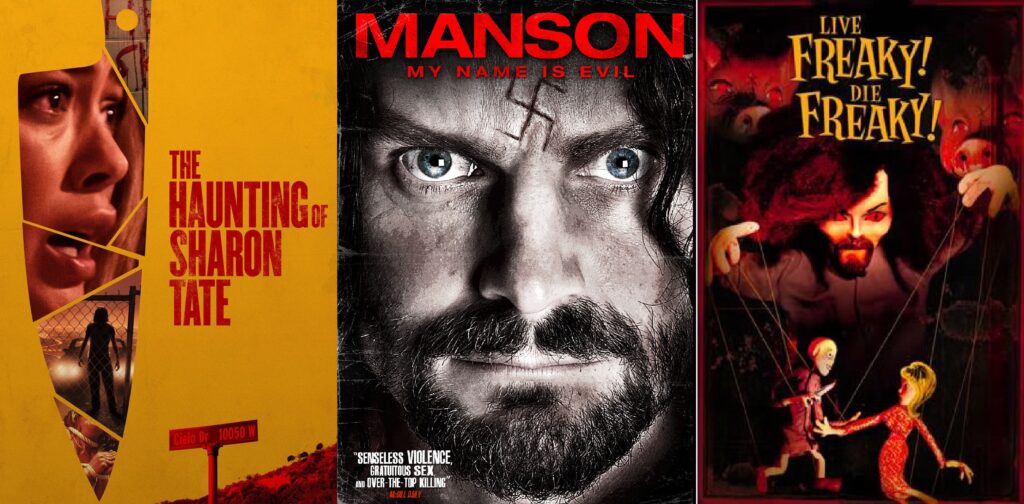
Charles Manson’s relationship to pop culture has always been a fascinating one. His story of a juvenile delinquent turned insane cult leader has influenced generations of artists from a wide variety of mediums. At this point in our history, we’re so far removed from the resulting murders that the mention of his name is hardly taboo.
There are plenty of factors that make his case somewhat unique, especially in regard to impact. He found “hidden messages” in popular songs, sparking a wave of Satanic Panic around otherwise innocuous music. Many elements of his twisted doctrine were derived directly from pop culture. A failed musician himself, you could argue that Manson was the inevitable extreme byproduct of celebrity worship. That’s a pretty shaky claim, but not to Manson apologists. It feels as if, when brought up in conversation, we’re referring to the concept of Manson the pop culture icon rather than Charles Manson, the man who orchestrated several murders mostly carried out by a harem of young women willing to do anything for their master. It’s a little bit sick.

Just as the country music industry exploited 9/11, the film industry has profited from the gruesome murder of Sharon Tate on numerous occasions. Tate wasn’t the only victim here, but she’s generally the only one that gets any significant attention. Her pregnancy at the time made her story all the more tragic, and her marriage to the director Roman Polanski has typically overshadowed her career as an actress. Her most well-known film, Valley of the Dolls, earned her a Golden Globe for “Most Promising Newcomer – Female” when that award still existed. The film wasn’t a critical success, but its sensationalist melodrama and free-love-era depictions of sexuality were enough to draw in more than ten times its budget. Various incarnations of Tate have appeared on-screen, but most depictions of the Manson murders are relegated to low-budget schlock that general audiences rarely balk at, mostly because these films are expected to be trashy and exploitative.
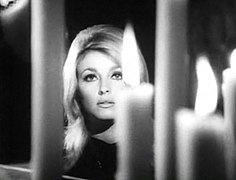
In 2018, Quentin Tarantino announced that his next film, Once Upon a Time in Hollywood, would feature both Tate and Manson as characters. Suddenly, whether or not this was a tasteful move came into question, probably because Tarantino is a mainstream director with exploitation roots. I’m sure whatever role these characters play in the new film, someone will take issue, and perhaps it’s good for a filmmaker like Tarantino to have some kind of accountability to his audience.
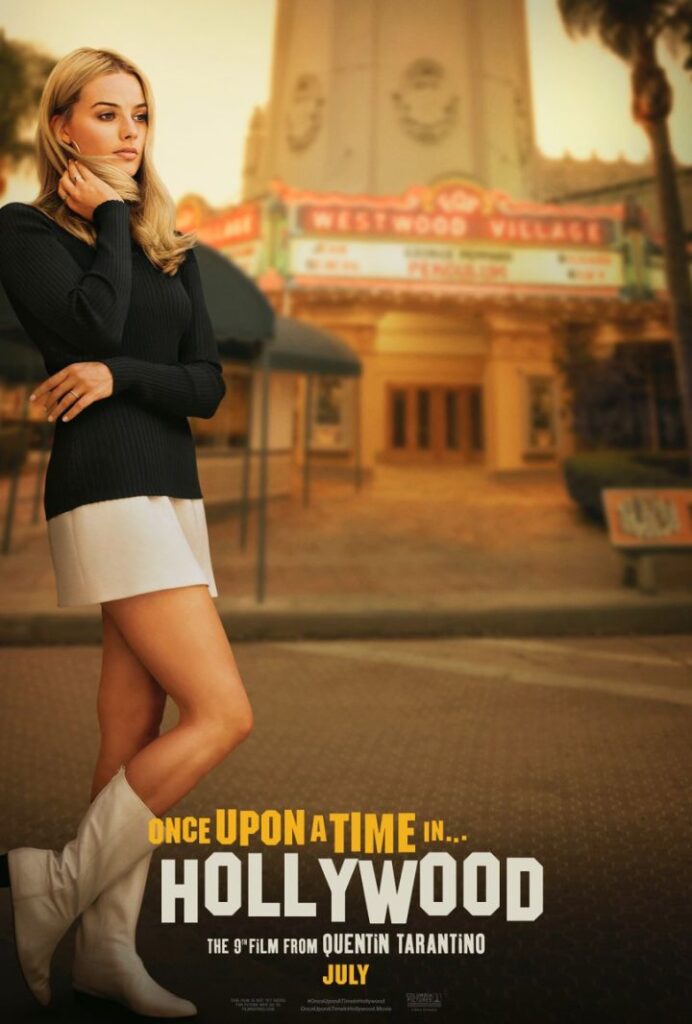
Since its initial announcement many months ago, details around Once Upon a Time in Hollywood have gradually surfaced, slowly building up hype for its release. If you just can’t possibly wait to watch Sharon Tate die a horrible death again, fret not! There are plenty of on-screen depictions of her demise, and the most recent one seems to have been deliberately released to capitalize on our craving for the inevitably exploitative nature of this upcoming Tarantino film.
I’ll admit that I got curious. I’ve seen several iterations of this story on film before, and most of them have been negligible true-crime-style dramas that don’t exactly “do justice” to the crimes described, if that’s even possible or desirable. This lead to an afternoon of watching three takes on the Tate murders that I never expected to see.
Manson: My Name is Evil
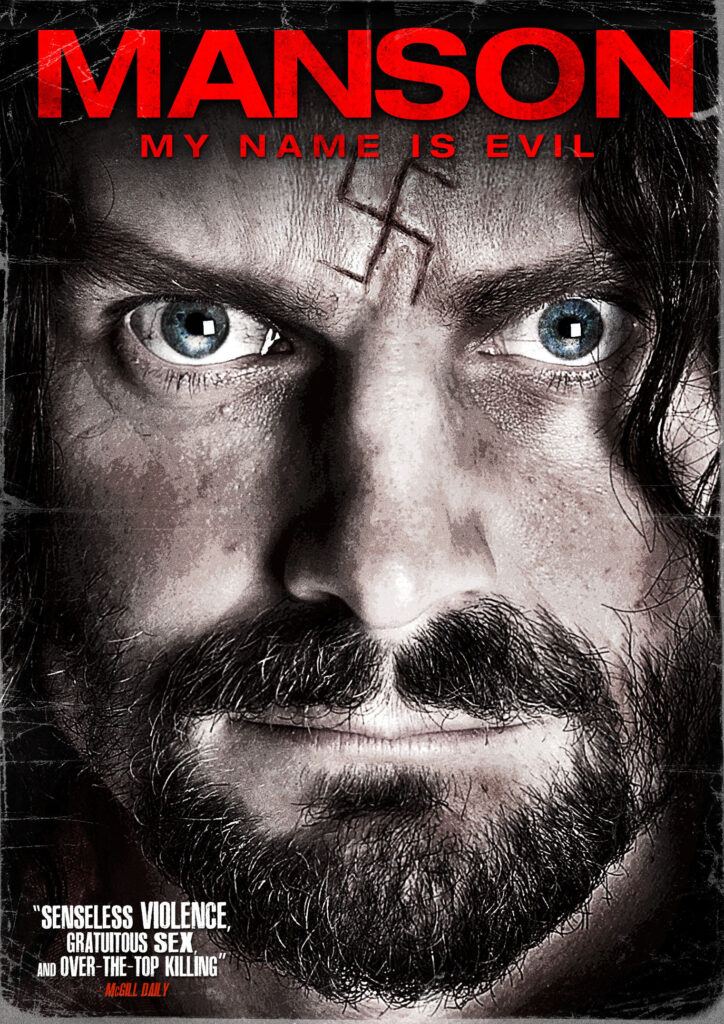
Originally titled, “Leslie, My Name is Evil,” this Canadian film was rebranded when test audiences were annoyed that the film seemed to be more about Manson than Leslie Van Houten. It did not sit well with critics, and one of the primary criticisms of the film was that it was more about Leslie Van Houten than Manson. This is made even more strange by the fact that the story’s main protagonist is actually Perry, a young man on the jury that convicted Leslie. While the film does guide us through what would drive a former cheerleader to join up with the Manson family, its main plot has far more to do with Perry’s difficult decision to sentence such a sexy young lady to death.
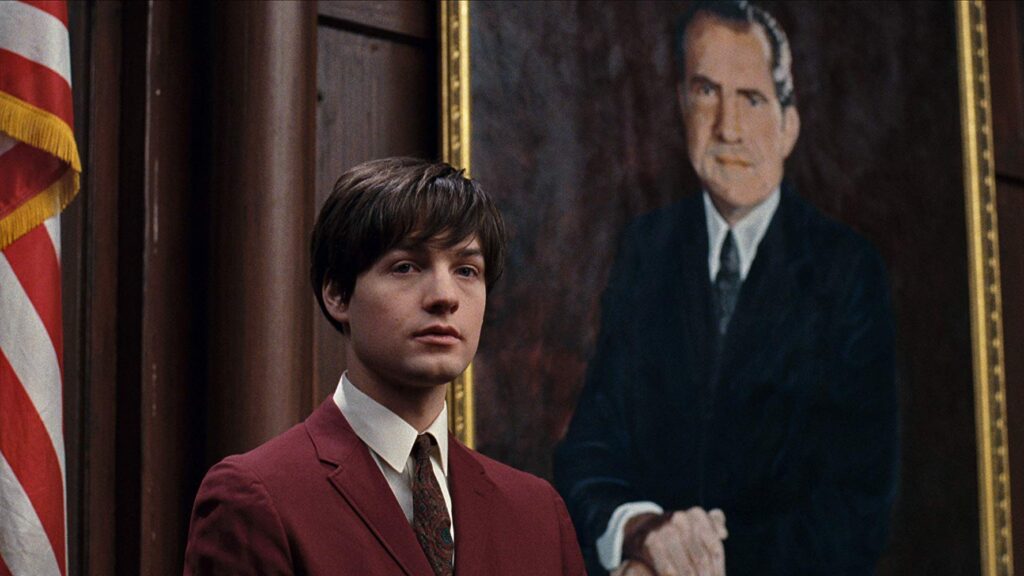
Perry is an excruciatingly boring human being. He’s a white protestant, totally celibate, and drug-free. His girlfriend, Dorothy, is psychotically in love with Jesus. His father is dead set on seeing his son die in Vietnam, so long as he brings a few “gooks” down with him. Those around Perry are extreme caricatures of white conservative protestants of the time.
Perry is silently at odds with those around him, unable to reconcile their fervor for death and destruction in the name of nationalism and loyalty to god with the actual teachings of Christ. To the dismay of his father, Perry finds a job that will grant him a draft exemption. He proposes to Dorothy and she accepts, and they begin to plan their new life. One day, Perry is called in for jury duty, and is picked to be on the jury that will sit in judgment of Leslie Van Houten and two other Manson girls.
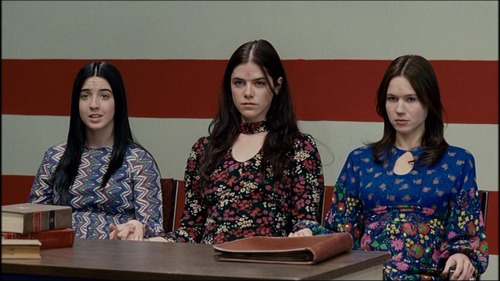
At the same time, we see young Leslie’s journey to Manson’s doorstep. She happens to be from a similar background as Perry, except more on the lower end of the socioeconomic spectrum. Her parents decide to divorce, an event that has a serious impact on her behavior. She becomes pregnant at a young age, and is forced to have an abortion by her mother. Her boyfriend Bobby introduces her to The Family, and slowly she becomes Charlie’s puppet.
Perry’s jury duty unfortunately takes place during the dates when he and Dorothy are supposed to be married. Dorothy decides to put off the wedding until after the trial, and Perry becomes infatuated with Leslie from afar, motivated by empathy for someone his own age, and general sexual frustration. He quickly becomes the only dissenting voice on the jury.
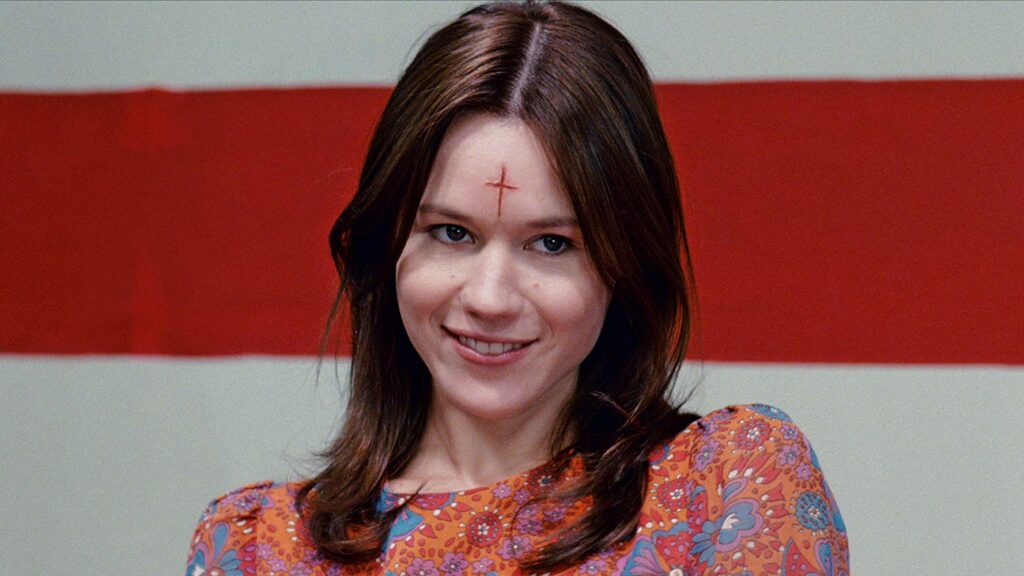
The film likes to make frequent comparisons between the Manson murders and the Vietnam war, a dubious equivalency that really seems to miss the point. The performances are okay, and this is certainly the most downplayed iteration of Manson I’ve seen in quite some time. Oddly enough, the film doesn’t really take its own thesis seriously. After pressure from all directions, Perry gives in and votes guilty. He still manages to “dodge” the draft, but his father mostly forgives him for this after Perry is dubbed a hero in his eyes for finally agreeing to put the Manson girls to death. His girlfriend agrees to marry him. In the end, nothing is really resolved other than the trial – which this film really isn’t about.
The following image appears toward the end of the film, I guess to illustrate the brutality of the Vietnam war.
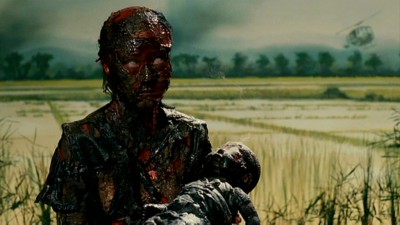
Manson, My Name is Evil starts out with a fairly interesting premise, and poses some very serious moral questions. Unfortunately, it refuses to address these issues, and instead reverts to telling a very straight-forward story that ends in an unimaginative way. Much of the film is darkly comic, and that humor mostly works in the first half of the film. By the halfway point, the whole plot feels played out and dull, and the rest is just a slog to the inevitable conclusion. While it isn’t awful, I can’t really recommend this one too highly. It will likely appeal to those who love the “quirky indie dramedy,” but that’s about it.
4/10
Live Freaky! Die Freaky!
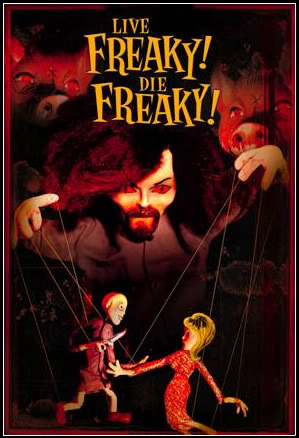
This next one is….special.
John Roecker was an independent director associated with the late-90s/early 00s punk music scene. His most famous connection was probably to Billie Joe Armstrong from Green Day, for whom he directed a behind-the-scenes documentary about the production of their 2004 album American Idiot. Two years later, Roecker somehow roped Armstrong into voicing a Charlie Manson facsimile in his next project, Live Freaky! Die Freaky! along with several of Armstrong’s band-mates and contemporaries, such as Tim Armstrong, Travis Barker, Kelly Osbourne, and Asia Argento. It’s a stretch to call those last two “contemporaries.”
The alleged plot of the stop-motion abomination that is Live Freaky! Die Freaky! is as follows:
In the year 3069, a nomad finds a copy of Helter Skelter and reads it. He approaches it as one would the Bible, and by the end, he is a devout Mansonite, ready to spread the good word of the mad prophet. The rest of the film is an excuse to re-enact the murder of Sharon Tate in the most tasteless way possible.
That frame story of a man from the future reading Helter Skelter is an interesting concept. Unfortunately, it takes up about 30 seconds of screen time, and goes nowhere. Also, I’m not quite sure if the filmmaker understands what the book is actually about. It’s certainly not a manifesto about how the murders were justified, as the film seems to think. It is not Manson’s “Mein Kampf.”
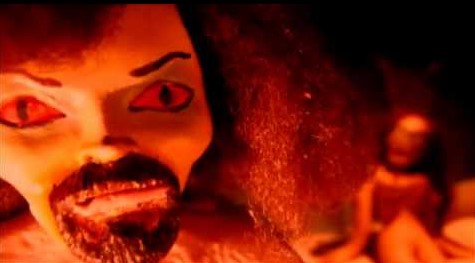
Once we’ve sort-of established the frame story, we meet Susan Hatkins, a dedicated “Charlie Hanson” follower incarcerated for murder. She begins to tell the story of how she reached this point. After a boring evening of popping LSD just to feel something, a strange man claiming to be her messiah shows up and forces himself on her. What follows is two to three minutes of really awkward puppet sex while Hatkins (now dubbed “Hadie”) swoons over how amazing her new savior is as he fills each and every one of her holes. The sex is incredibly graphic, but the animation is so primitive and lazy that it just feels juvenile.
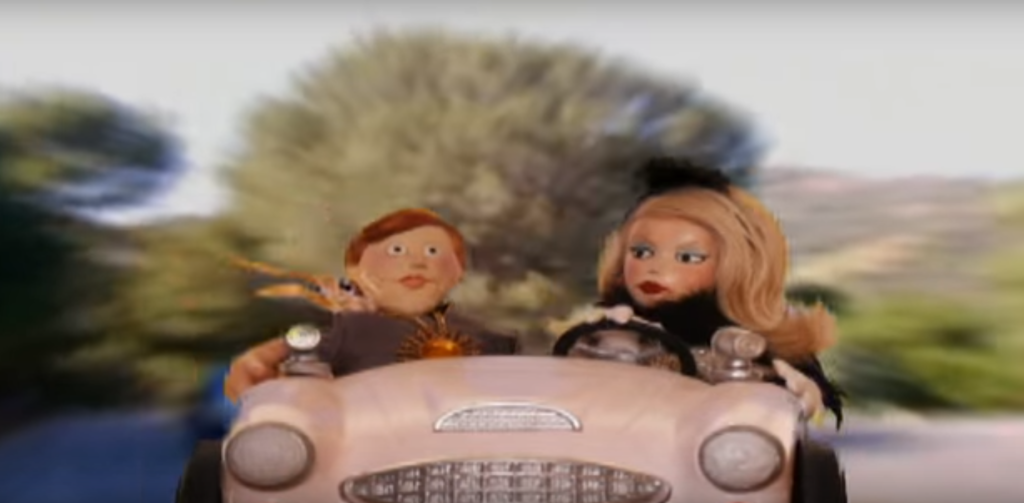
Once Hadie runs away with Charlie, we’re introduced to Sharon Hate and her gay best friend. Sharon is a disgusting bourgeois hypocrite who hates the ozone layer and poor people. She sings a song that begins, “I’d rather strangle a tree than hug it.” After accidentally ending up in a middle-class part of town, Hate’s GBF says, “Where the fuck are we? This neighborhood looks positively middle class. Look at those messes! If you drove me to the valley, I’ll stab you to death and rip your baby out of your stomach and fuck it.” There’s an awkward silence, and then both characters laugh. Yeah. It’s that kind of movie.
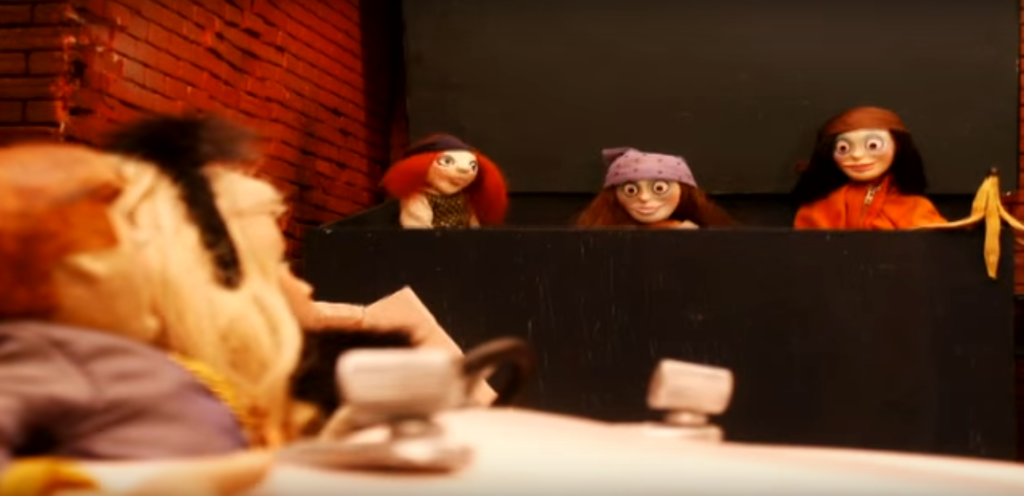
Hate begins taunting a series of Hanson followers who are digging through dumpsters. Their retort is a bland speech about consumerism. Hanson then makes up a story about how Sharon Hate is going to build supermarkets or something in the desert. This is Charlie’s reason for ordering his followers to kill Hate.
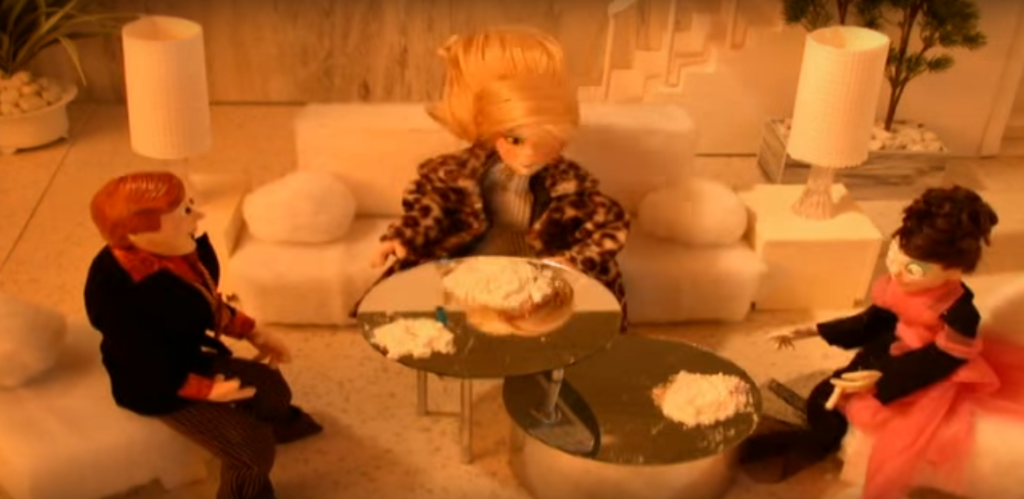
Unfortunately, this is where the film begins to get really, really boring. There are several scenes of contradictory pseudo-philosophical banter, and the family finally makes their way to Hate’s estate. The pregnant Sharon is snorting coke with some friends, and then gets really pissed when one lights up a cigarette. You know, because she’s pregnant. Sharon and her gay friend exchange really, really graphic and homophobic dialog for a full five+ minutes about having sex with the handicapped before dying a gruesome death. Their decapitated heads continue this trend for another minute as her friend’s severed head tries to suck his own severed dick.
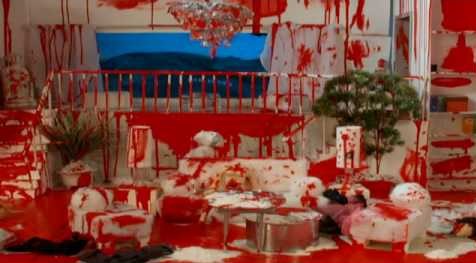
The film tries to wrap itself up by bringing everything full circle with a lot of lecturing, but it fails miserably. Ultimately, it ends up being a tedious exercise in bad taste. It’s a real shame too, because the idea has the potential to be at the very least entertaining in a sleazy way. Instead, it feels like an unfinished student film. If you really, really need to know what puppet sex with Charles Manson is like, you can find the entire film on YouTube.
2/10
The Haunting of Sharon Tate
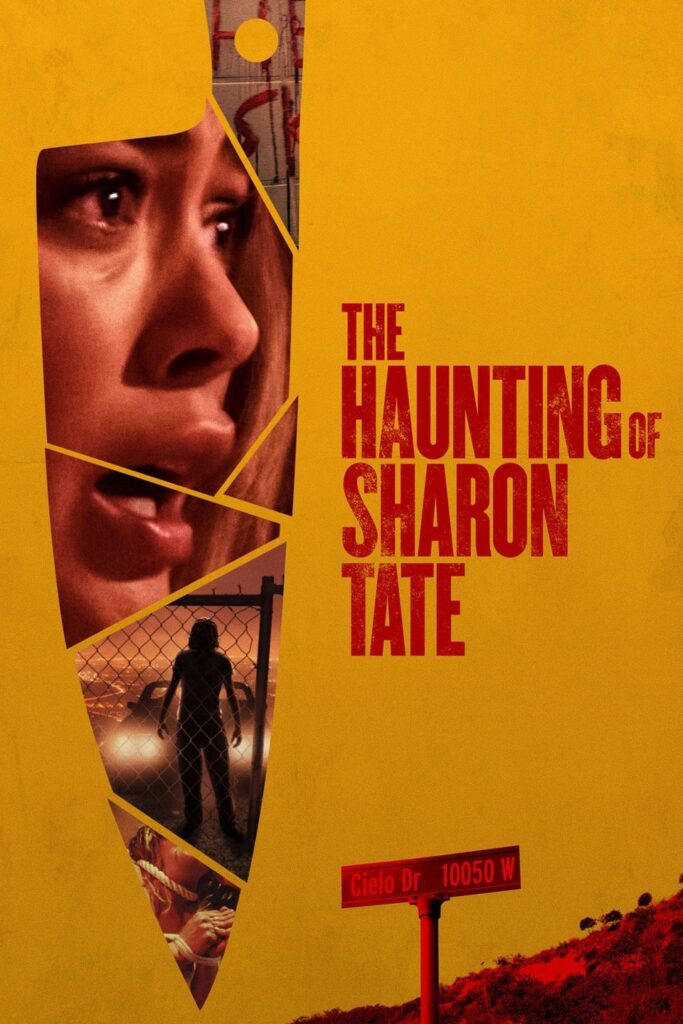
The final film in my Manson triple-feature is the oddly-titled, The Haunting of Sharon Tate. Right from the get-go, there’s a problem here. Who exactly is haunting Sharon Tate, and why? Why would someone introduce supernatural events into the Manson murders? WHY ARE WE MAKING YET ANOTHER MOVIE ABOUT THE DEATH OF SHARON TATE? Be prepared for the film to answer none of these questions.
The Haunting of Sharon Tate differs from most of the other films covering this subject matter, in that it focuses on Sharon Tate without getting lost in the world of Charlie Manson. Manson gets very little screen time, which would be a little disappointing if this film’s version of the man wasn’t so boring. He spends most of his time in the shadows, and I’m okay with that.

Tate is played by former Disney star Hillary Duff, a natural progression for her career. The film begins with Tate giving an interview in glorious black-and-white regarding predestination. In other words, she makes a lot of surface-level statements such as: “What if our lives are already laid out for us, and there’s no way for use to change our destiny?” Exploring the idea of destiny is completely fine…in a fictional film. However, this is a true story. Why would this idea factor into a true story?
We then see a very pregnant Tate arrive at her home, greeted by several of her friends who seem to squat on her property on a regular basis. They all hone in on Tate, desperate to take care of her to ensure that her baby is healthy. This is where the film begins to hint at small deviations in story-line. One of her friends has taken the initiative to set up Tate’s nursery, something that she seems a bit put off by. The crib used appears much like the one in Rosemary’s Baby….and that’s when I realized what this whole charade was probably headed toward.
In Rosemary’s Baby, a film directed by Roman Polanski (Tate’s husband) just a few years before Tate’s death, tenants of an apartment complex descend upon Rosemary Woodhouse to ensure that her child-bearing process goes smoothly. Of course, Rosemary is carrying Satan’s child, and so the coven, comprised of the complex’s residents, simultaneously gaslights her while still attempting to preserve her physically so as not to hurt their unborn savior. In The Haunting of Sharon Tate, we spend half of the film wondering about the motivations of its characters, and if they will perhaps be in on the murders. This is also hinted at by the fact Tate’s dog is named, “Dr. Sapirstein,” a clear reference to Rosemary’s Baby that lacks any form of subtlety. She also finds a copy of the script lying around.
Unfortunately, that premise is just too interesting, and not nearly disrespectful enough for this film. By the halfway point, this concept is abandoned entirely. Tate begins to have dreams that she and her friends are being murdered, and they begin to drive her quite mad. These dream sequences feel like an excuse to run through the murders multiple times. They aren’t psychedelic or even dream-like…they’re just murder scenes. They last so long that by the time Tate wakes up, it feels like the film is about to reach its natural conclusion.
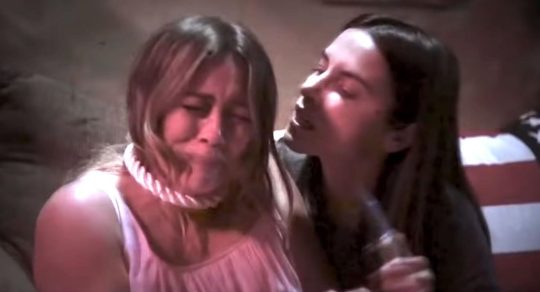
After multiple false starts, the Manson family finally invades the house for real. This time, however, Tate is prepared. She tries to use the scenario ran through in her dreams to predict what the killers plan to do, and she’s correct at every turn. It’s like Groundhog Day, except less believable, and far more tacky.
This reveals the actual purpose and premise of the film – Sharon Tate is finally getting her revenge. The rest of the film plays out like a typical slasher or home invasion thriller, in which Tate is the classic “Final Girl” trope, dramatically killing all the Mansonites before her or any of her friends are harmed.
Unfortunately, this doesn’t seem to be the film’s central premise either. It sounds like a fairly interesting and surreal take on the Manson murders, but it’s not. It’s boring and rushed, and Tate isn’t very likeable. To add insult to injury, at the very last minute, the film reneges on everything that came before. As the police drag several bodies out of the house, Tate rushes (as much as one can rush when the frame rate is reduced to 10fps because the cinematographer lacks any understanding of how slo-mo works) to the side of her friends, who are all unharmed. Then, we notice that the bodies on the ground are not the bodies of the killers, but the bodies of the alleged survivors. None of this happened. The film ends with the same monologue it began with, explaining once again that some of us are just destined to die at the hands of a Satanic hippie cult, and there’s nothing we can do about it.
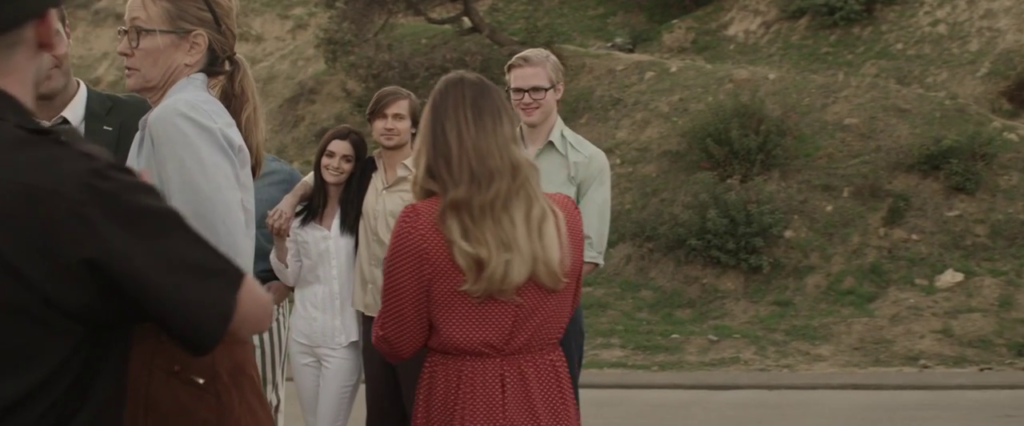
In addition to being a cynical cash-grab to capitalize on the recent prominence of Sharon Tate, this movie also really feels like it’s trying to ride on the coat-tails of the upcoming Once Upon a Time in Hollywood. The film is so repetitive that it couldn’t have taken very long to film, and my guess is that this had a significant impact on the budget needed to make this happen.
Hillary Duff’s acting, and the acting of everyone involved, is really, really awkward. There’s nothing visually distinct or interesting that sets this apart from other versions of the same story. The interview about fate completely sabotages any chance this had at being some compelling revisionist history piece. I have such a hard time justifying this movie’s existence, and as such, of these three films, it feels the most disrespectful to Tate. Yes, I am implying that the movie that cuts to Tate’s unborn child swimming around in a winter wonderland after she does a mound of coke is actually more respectful to Sharon Tate’s character than The Haunting of Sharon Tate.
The actual “haunting” that goes on this film is either non-existent or ambiguous. I have a hunch that the implication here is that Tate is a ghost by the end of the film, sort-of haunting her own house, I guess. That still doesn’t entirely make sense, but it’s the best I’ve got. For a film that so clearly wants to empower Tate, she spends much of the film dis-empowered, and that’s ultimately the point. It’s an unintentionally nihilistic message that brings the viewer false hope.
2/10
Unless everything Manson fascinates you to an alarming degree, I recommend staying far away from all three of these films. If you watch any of them, watch Live Freaky! Die Freaky! At least you won’t have to pay for it.